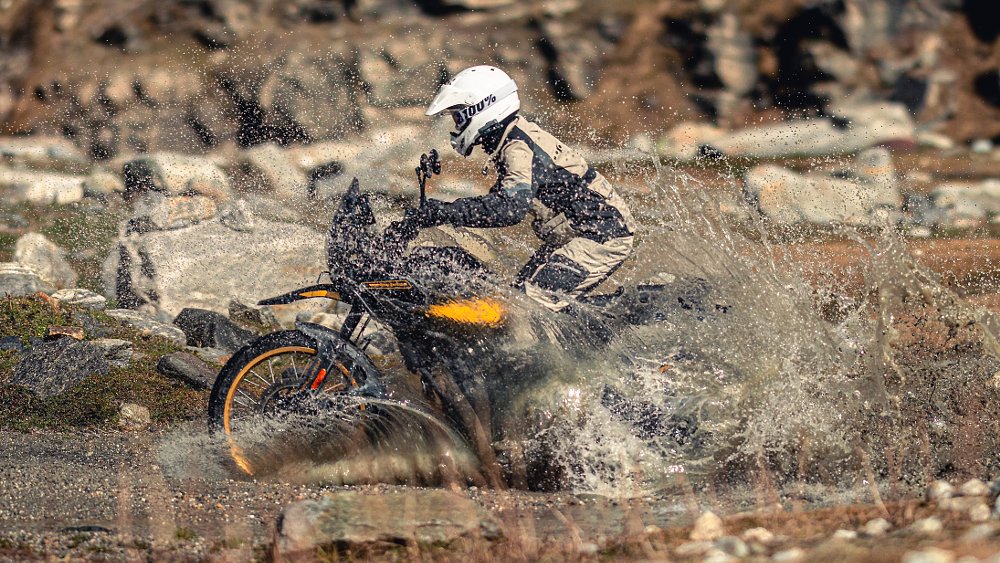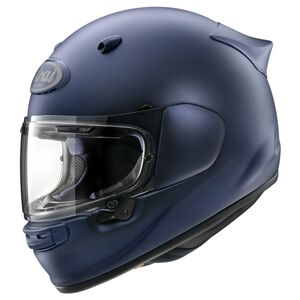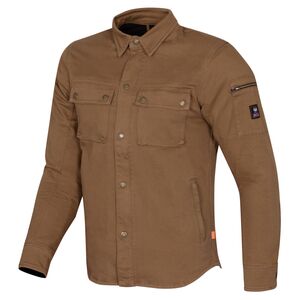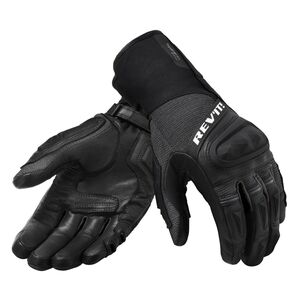As Triumph tells it, today’s small-capacity market is a tale of two classes. Models from Royal Enfield’s 350 series tug at our nostalgic heartstrings with classically handsome looks, delightfully tame behavior, and charming simplicity. Meanwhile, BMW’s G 310 range lives in the present day, featuring sporty styling, modern mechanics, and contemporary creature comforts. Character defines one platform. Performance drives the other. And never the twain shall meet.
Don’t tell that to the 2024 Street 400 and Scrambler 400 X.
By claiming the territory between cooling fins and liquid-cooling, between yesteryear and youth, Triumph’s new TR Series blends the “best of both worlds.” That isn’t the only chasm the brand aspires to bridge. The Hinckley-designed, Bajaj-produced models must also span the generation gap, appealing to younger beginners and older returning riders. All while delivering Triumph-quality fit and finish in a checkbook-friendly package.
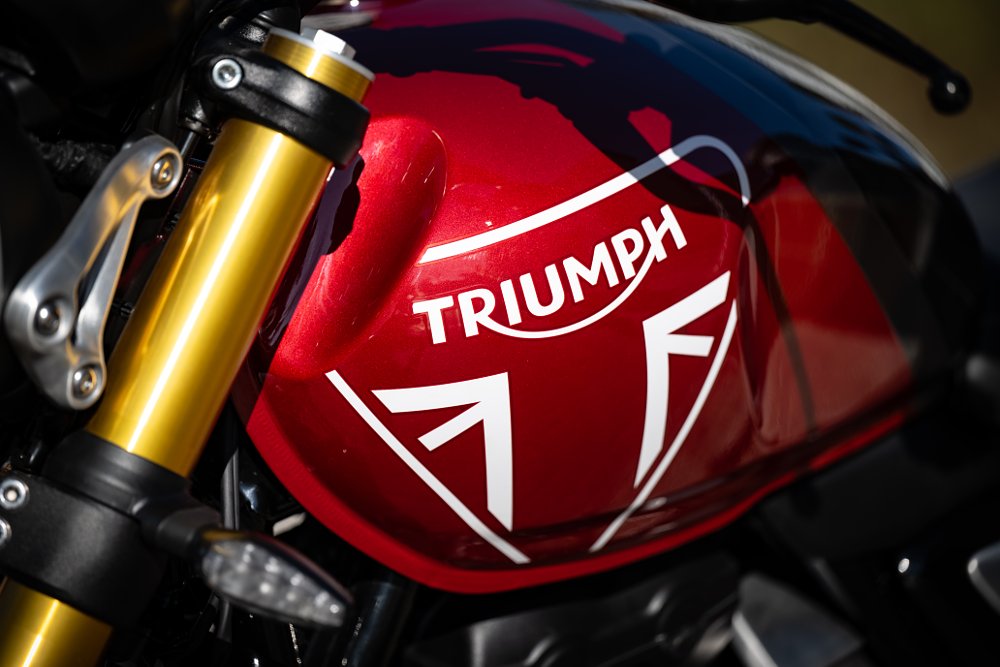
If you’re picking up a whiff of wanting-to-be-everything-to-everyone, you’re not alone. The single-cylinder TRs are ambitious newcomers, maybe overly so. Zack and Spurgeon were among the first to ride the two TRs for an epic CTXP episode, but they were mainly just trying to survive the challenges of getting to the world's highest road. To focus more on the machines themselves and determine whether the retro roadster and scrambler can live up to Triumph’s wide-ranging expectations, the British marque invited yours truly to a one-day test ride in Valencia, Spain.
Yes, the Street 400 and Scrambler 400 X separate from the pack with a unique blend of then and now, but the real story lies in the differences and similarities between the two.
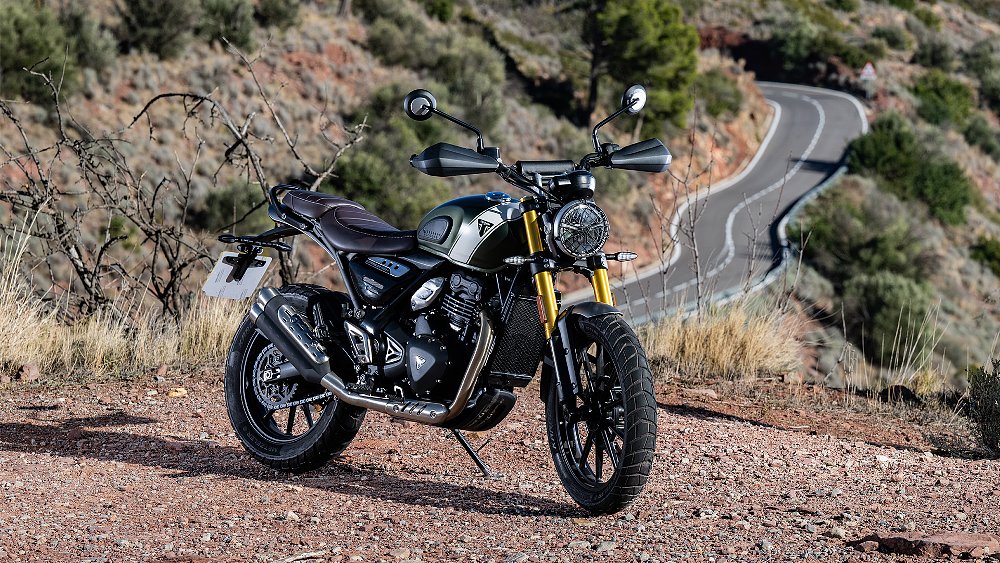
Common ground
The greatest similarity between the two fraternal twins is the engine. By most appearances, the 398 cc single mimics thumpers of bygone eras. Cooling fins on the cylinder head and header clamp communicate as much. The mill’s discreetly mounted radiator also downplays its modern roots. The rest of its engineering wizardry is hidden on the inside. I’m talking Bosch electronic fuel injection, dual overhead cams, a finger-follower valve train, and DLC-coated cylinders. Complex tech in a timeless package. What more could you ask for?
How about 39.5 horsepower and 27.7 foot-pounds of torque? That’s what Triumph and Bajaj list for the jointly developed powerplant. My butt-dyno isn’t calibrated to confirm those numbers, but I can verify the engine’s perky character, particularly in the midrange. The throaty thumper truly hits its stride at the 5,000-rpm mark, where torque and power two-step the staircase to their respective peaks at 6,500 rpm and 8,000 rpm. Both TR models thrive within this 3,000-rpm range. They don’t fare as well outside of it.
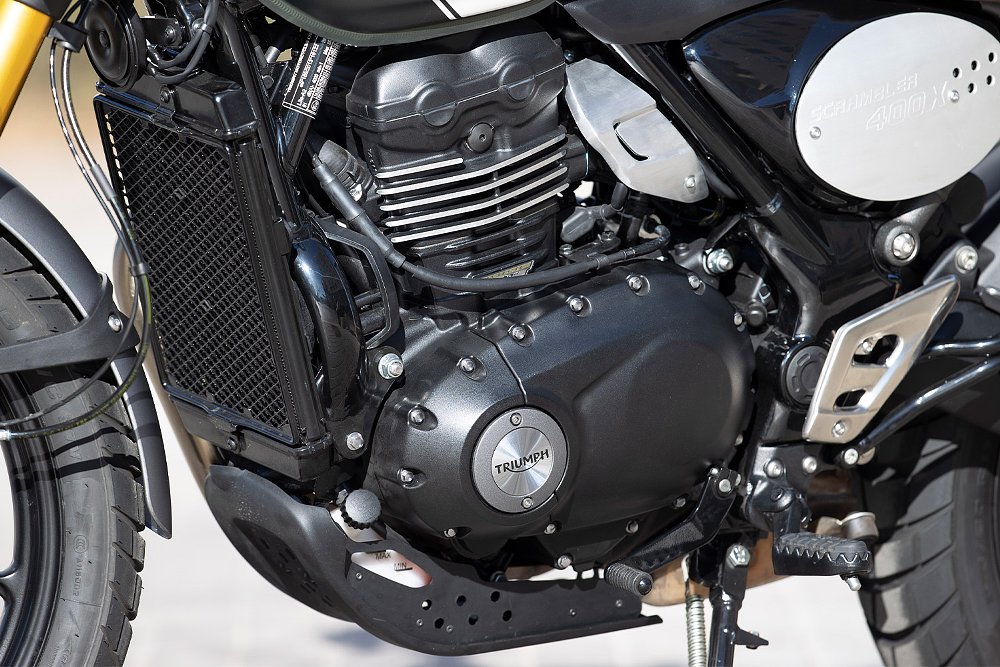
Away from a stop, throttle pickup is notably abrupt. The two 400s have short gearing, which helps with acceleration. The downside is an increased feeling of a snatchy throttle below third gear. I found that short-shifting through first and second lessened that jumpy behavior out of the blocks.
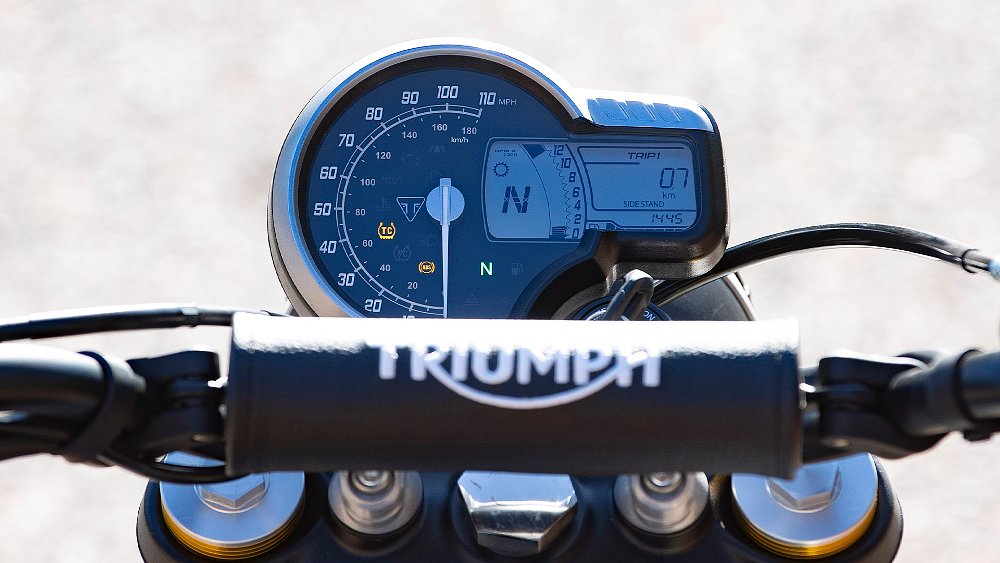
Once beyond second gear, the key is keeping the engine between 5,000 and 8,000 rpm. The power delivery feels soft when accelerating out of a corner one gear too high but flirting with the redline creates significant vibrations. By the time the Speed and Scrambler unleash their peak ponies, both are shaking like unleveled washing machines on spin cycle. Vibrations start building around 7,000 rpm. By the 9,500-rpm redline, the pegs, tank, and handgrips rattle at high frequency. It’s easy to ignore those buzzy tendencies while hustling through a tricky series of chicanes. It’s nearly impossible to do so on the highway.
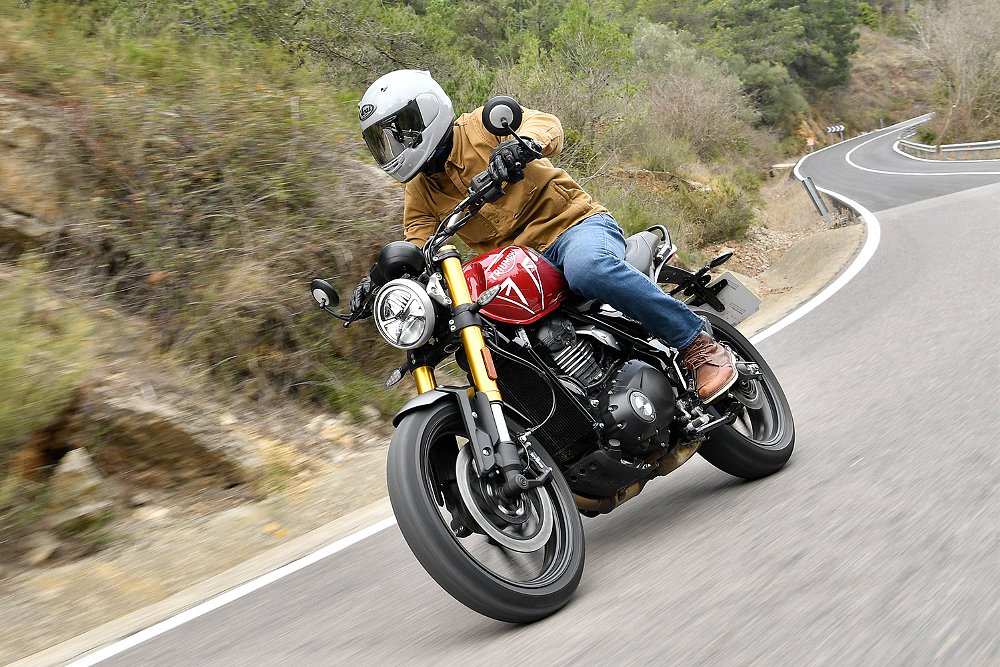
Both 400s owe any dreams of the open road to Triumph’s six-speed gearbox. At 70 mph in top gear, the bar-style tach hovers around 6,000 rpm. The lovable lump doesn’t yield the same hand-numbing vibes in that overdrive gear; it doesn’t yield the same direct throttle response, either. In most cases, riders will need to drop a gear before overtaking another vehicle. No surprises there.

In sum, Triumph’s 398 cc thumper is a capable block that offers strong pull throughout the midrange. As long as users keep the engine spinning in the meat of its powerband, the four-valve wonder packs pep in its step. Despite the smaller countershaft sprocket (one less tooth) on the Scrambler 400 X, the singles are practically identical in both Modern Classics. It’s the changes outside the engine that truly differentiate the TR siblings.
All their own
The Scrambler 400 X isn’t just a Speed 400 rolling on knobbies. Key changes run as deep as the hybrid spine/perimeter frame. Both units share the same tubular steel construction and general shape, but Triumph accommodates the Scrambler’s larger 19-inch front wheel by extending the headstock by 20 mm (0.79 inches). That seems like an insignificant figure on paper. It’s a marked modification in the saddle.
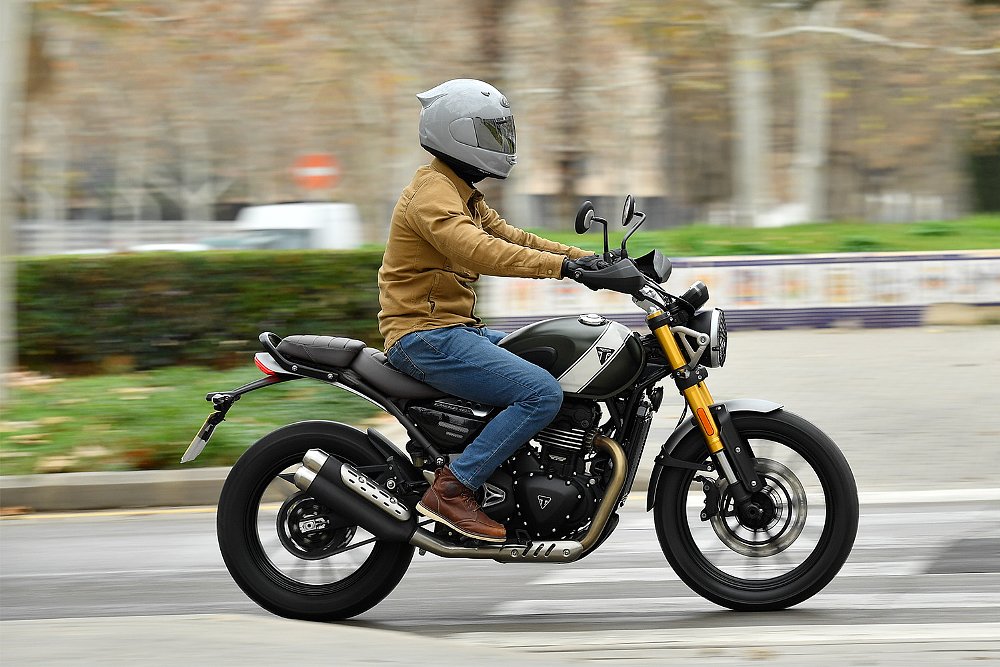
The Speed’s cockpit is much more compact by comparison. Reaching the handgrips requires little effort, yet the resulting position still nudges the pilot’s weight closer to the front wheel. Considering the Speed’s sporty aims, that’s an advantageous quality. The Scrambler’s rider triangle is even more relaxed. Hinckley engineers counteract the frame’s longer neck by rotating the handlebar back toward the rider, which leads to a bolt-upright posture. That’s not the only difference in the ergonomics.
The two TRs each come with a 43 mm inverted fork and rear monoshock, except the Speed’s setup offers 5.5 inches of front wheel travel and 5.1 inches out back, while the Scrambler benefits from 5.9 inches all around. The extra suspension stroke not only enhances the 400 X’s disposition toward the dirt but also raises its seat height to 32.8 inches (versus the Speed 400’s 31.1-inch seat height).

It’s the Scrambler’s longer headstock and taller saddle that make it look and feel more like a full-sized motorcycle. Whereas the Speed is closer to seven-eighths-sized due to its squat stature and compact cockpit. Even so, the larger riders in our group hardly complained about either model’s accommodations. Taller folks might find the legroom limiting, especially as the miles tick off the odometer, but both 400s remained comfortable on urban streets and canyon roads. After all, that’s where most owners will use the zestful singles.
Play to your strengths
To help grant the Scrambler nearly one inch of additional rear wheel travel, Triumph added two links to the model’s final drive chain and pushed the wheel further aft in the swingarm axle carrier. Those tiny tweaks amount to a substantial change, especially alongside the model’s extended headstock. While the Speed 400’s wheelbase measures just 54.2 inches, the Scrambler 400 X’s wheelbase extends to 55.8 inches. That difference in length predictably affects the handling.
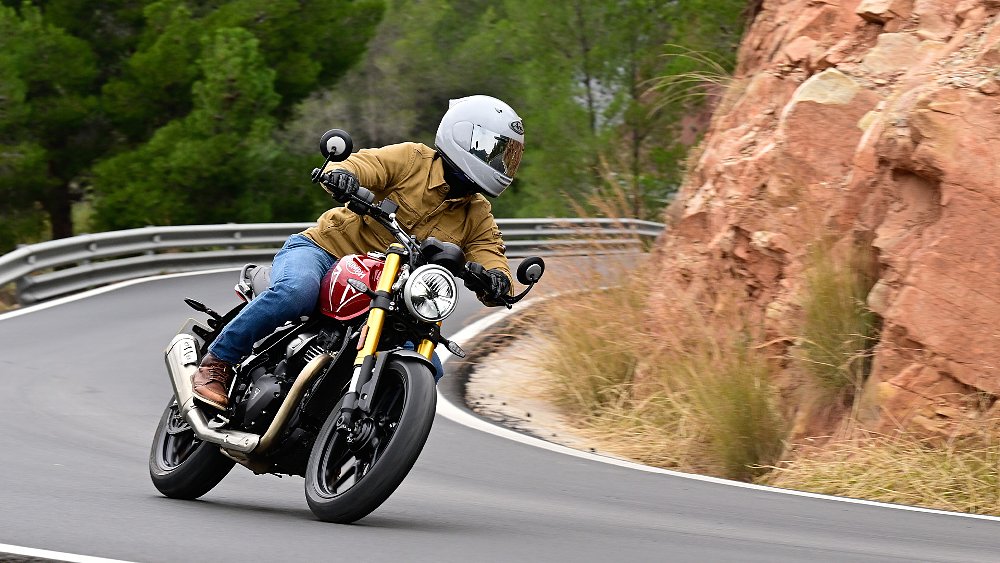
If the Scrambler glides through corners, its roadster relative darts through them. If the Speed 400 is a slalom skier, the 400 X skis giant slalom. Same sport, different discipline. That was made clear on the fast and flowing mountain passes just beyond the city confines, where the Scrambler clung to the Speed’s coattails. That was no longer the case once the turns tightened, as the athletic standard easily pulled away from its trail-exploring sibling.
The Speed 400’s compact dimensions aren’t its only advantage. Though the model’s 300 mm front disc doesn’t match the 400 X’s 320 mm front rotor, its metallic brake pads deliver superior braking performance. Not once did I question the Speed’s stopping power, even when trail braking late into the corner. I can’t say the same for the Scrambler. On numerous occasions, I found myself wondering, “Will I make the corner? Will I rear end the rider in front of me? Does that guardrail have a soft spot anywhere?”
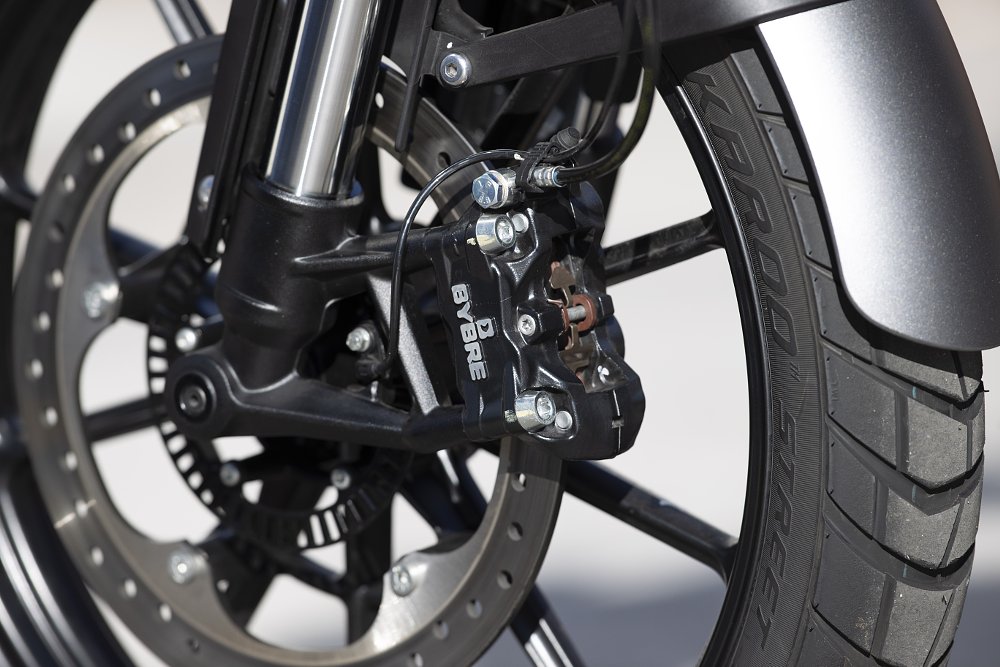
The reason for that is that Triumph outfitted the Scrambler with non-metallic pads for gentler front-end braking off-road. With cast wheels wrapped in Metzeler Karoo Street tries, however, the Scrambler isn’t begging to venture onto the loose stuff all that often. Our off-road route, which Triumph restricted to a one-mile green lane (or fire road if you don’t speak British English), only supports that statement. For the few Scrambler riders who spend a lot of time on dirt, the front brake makes sense. But I suspect most riders will spend almost all their time on pavement, and they would be better served by brake pads that provide greater stopping power from a lighter lever tug. Fortunately, the brake calipers are the same so Triumph engineers confirmed that Scrambler riders could switch to the Speed's brake pads for an easy solution.
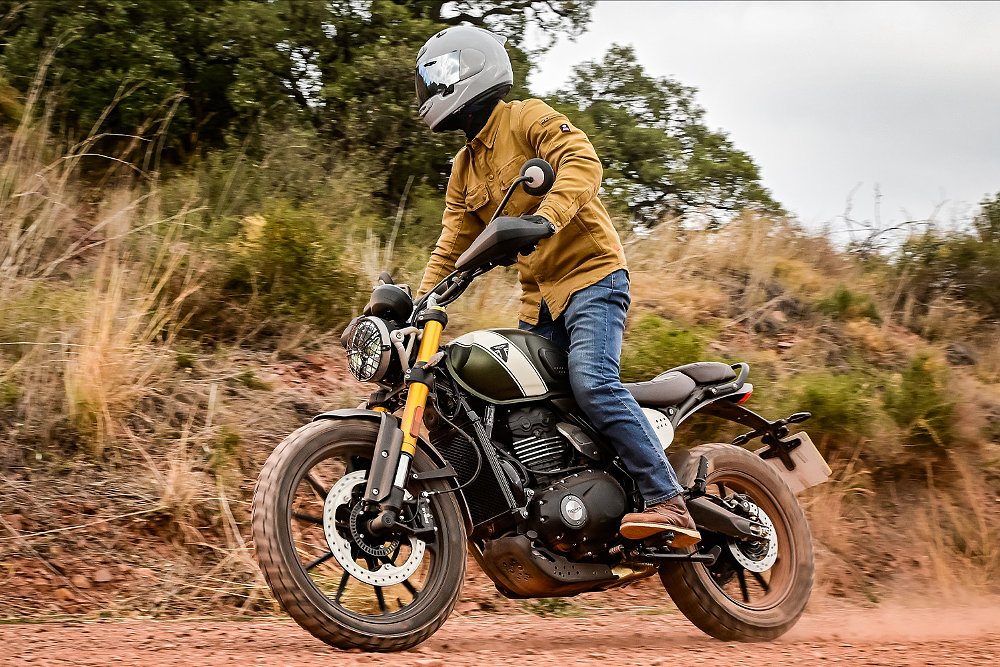
The TR models take different paths at nearly every turn, and while that includes the suspension, both setups were similarly competent. Surprisingly so, I might add. Undersprung front ends and shocks aren’t all that uncommon in this segment. Triumph’s suspenders, albeit non-branded, make no such compromise.
The fork remains supportive in heavy braking zones. Mid-corner bumps don’t upset this apple cart, either. Only after a few flat-topped speed humps and sharp-edged potholes did I think, “adjustable rebound and compression damping would be nice to have (but not a need-to-have).”
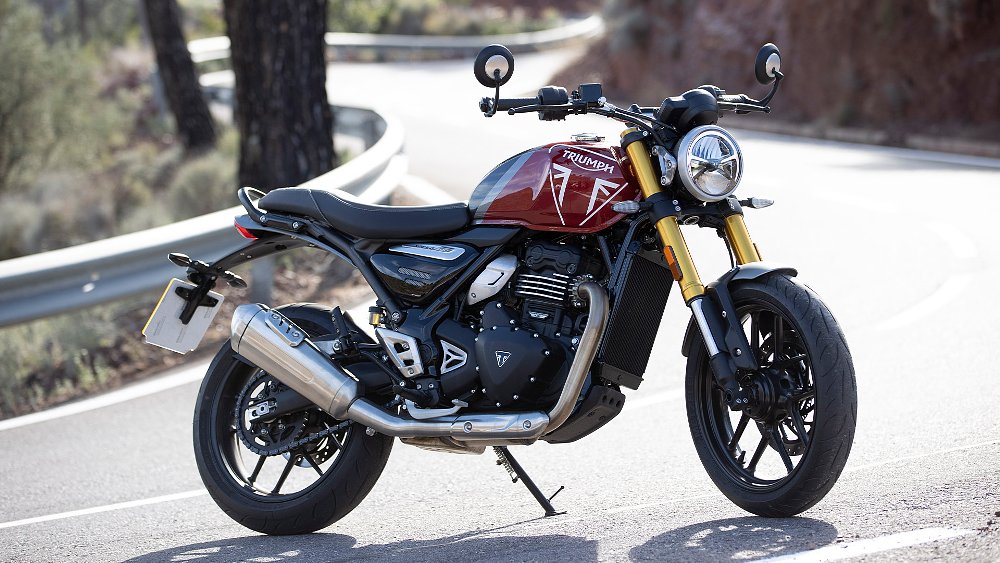
Battle Royale
The TR Series is the Hinckley-based Triumph’s first foray into the sub-500 cc category — and it’s an impressive one at that. Bajaj deserves just as many kudos for the Speed 400 and Scrambler 400 X’s successful debut. There’s just one fly in the ointment. Triumph acknowledged Royal Enfield’s 350s and BMW’s G 310 lineup as the TR’s natural rivals, but you can’t cherry pick your enemies. The Speed 400 ($4,995) will also duke it out with the KTM 390 Duke ($5,899), Kawasaki Z500 ($5,599), and Yamaha MT-03 ($4,999).
Competition may be stiffer for the Scrambler 400 X ($5,595), with likes of Honda’s CRF300L Rally ($6,199), SCL500 ($6,799), and KTM’s 390 Adventure ($7,399) vying for the same customers. Royal Enfield’s recently revamped Himalayan will also challenge Triumph’s entry in the small-capacity battle royale. While the new Himmy’s U.S. price remains under wraps, its performance and past-meets-present design positions it as a direct rival to the Scrambler 400 X.
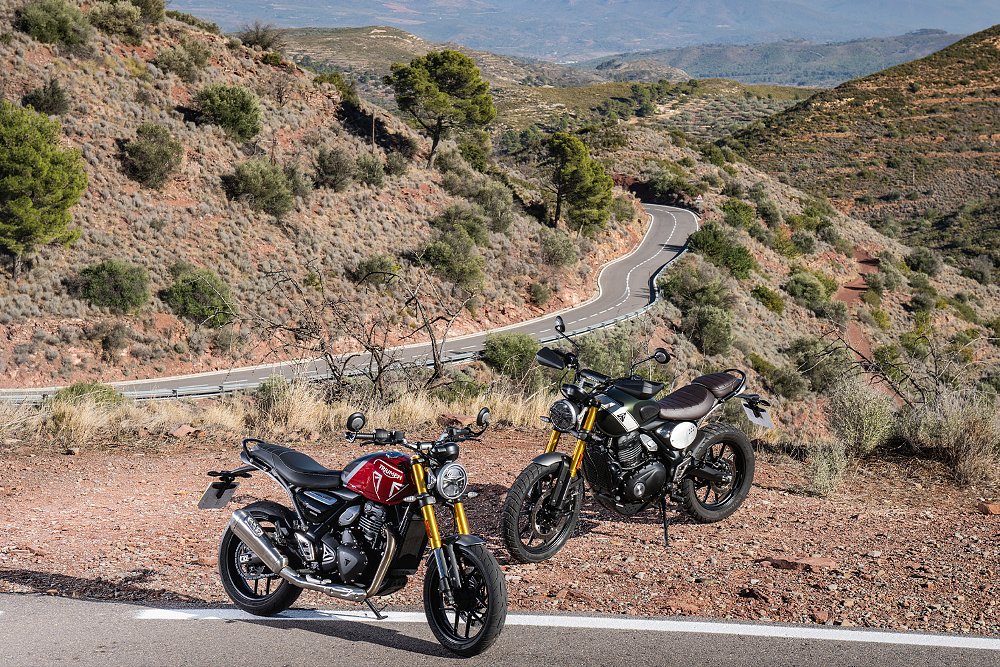
Triumph will need all the momentum it can gather as it enters a crowded and competitive segment (as a latecomer, at that). Fortunately for the British OEM, its latest Modern Classics meet most of its wide-ranging expectations. Both bikes meld yesterday and today. They exude Triumph quality at an aggressive price point. Only consumer reception will determine whether the TR Series manages to truly blend the “best of both worlds” when the Speed 400 and Scrambler 400 X hit North American showrooms in March.
| 2024 Triumph Speed 400 | 2024 Triumph Scrambler 400 X | |
|---|---|---|
| Price (MSRP) | $4,995 | $5,595 |
| Engine | TR Series 398 cc, liquid-cooled, four-valve, single-cylinder | |
|
Transmission, final drive |
Six-speed, chain | |
| Claimed horsepower | 39.5 @ 8,000 rpm | |
| Claimed torque | 27.7 foot-pounds @ 6,500 rpm | |
| Frame | Tubular steel, bolt-on subframe | |
| Front suspension | 43 mm fork; 5.5 inches (140 mm) of travel | 43 mm fork; 5.9 inches (150 mm) of travel |
| Rear suspension | Monoshock, adjustable for spring preload; 5.1 (130 mm) of travel | Monoshock, adjustable for spring preload; 5.9 inches (150 mm) of travel |
| Front brake | Radial-mounted four-piston caliper, 300 mm (11.8-inch) disc with ABS | Radial-mounted four-piston caliper, 320 mm (12.6-inch) disc with ABS |
| Rear brake | Floating caliper, 230 mm (9.1-inch) disc with ABS | |
| Rake, trail | 24.6 degrees, 4 inches (102 mm) | 23.2 degrees, 4.3 inches (108 mm) |
| Wheelbase | 54.2 inches (1,377 mm) | 55.8 inches (1,418 mm) |
| Seat height | 31.1 inches (790 mm) unladen | 32.8 inches (835 mm) unladen |
| Fuel capacity | 3.43 gallons (13 liters) | |
| Tires | Metzeler Sportec M9RR 110/70 R17 front, 150/60 R17 rear | Metzeler Karoo Street 100/90 R19 front, 140/80 R17 rear |
| Claimed weight | 375 pounds (170 kilograms) wet | 395 pounds (179 kilograms) wet |
| Available | March 2024 | |
| Warranty | 24 months | |
| More info | triumphmotorcycles.com | triumphmotorcycles.com |


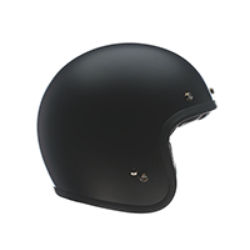

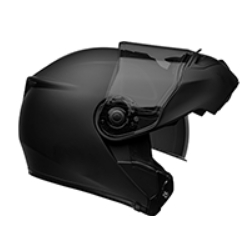

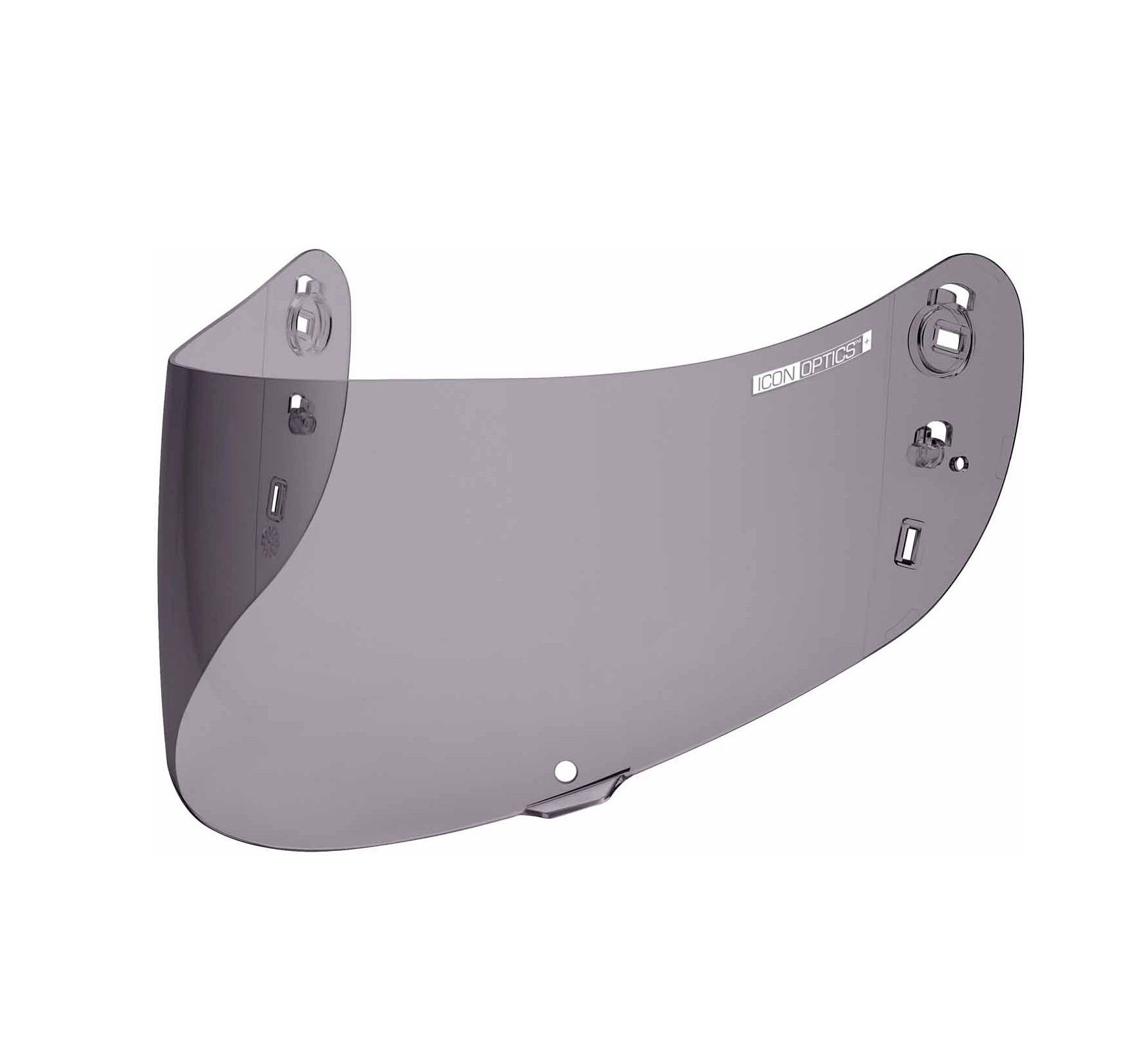
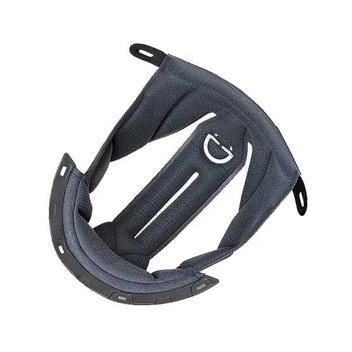
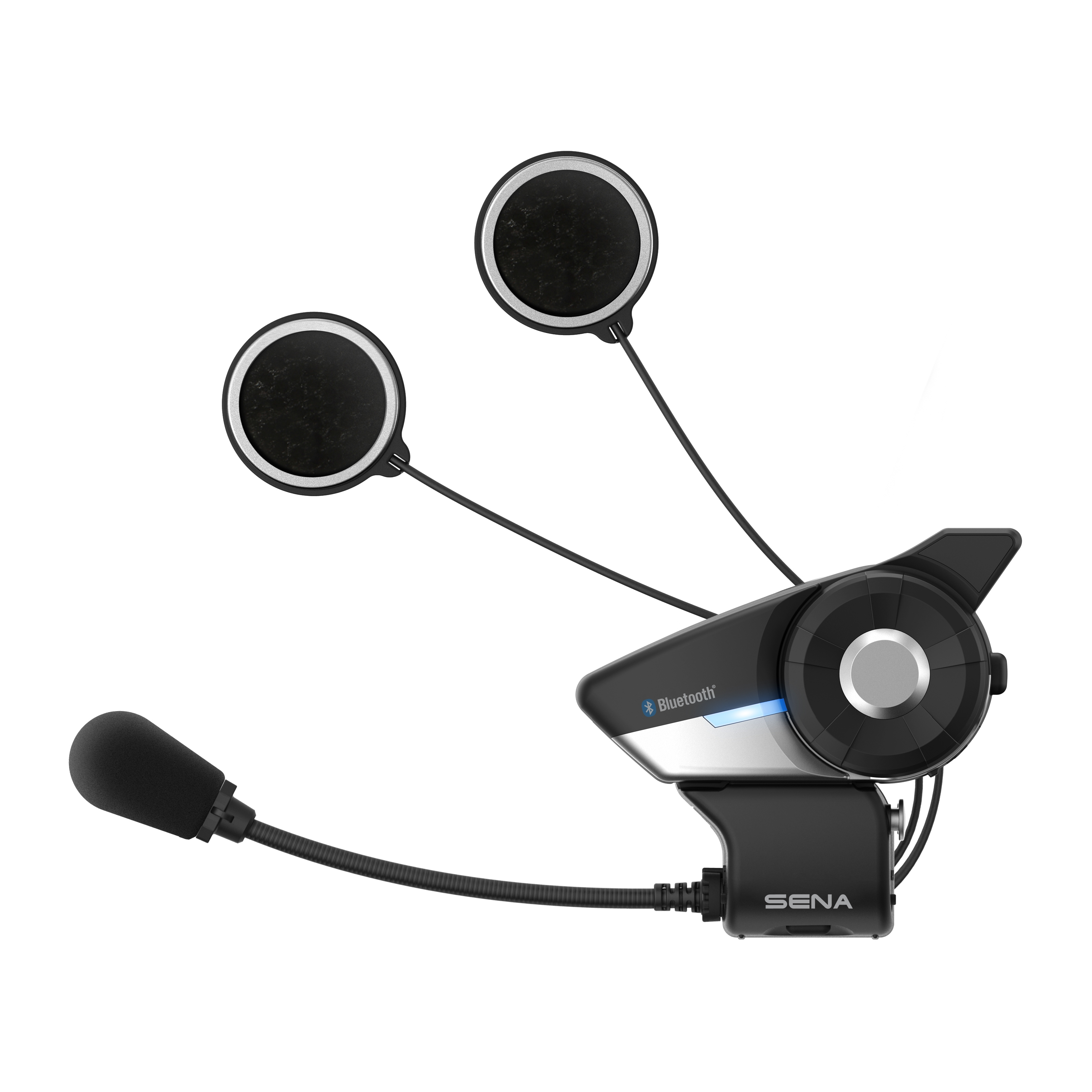


 Membership
Membership









